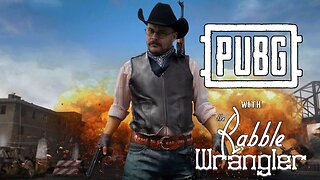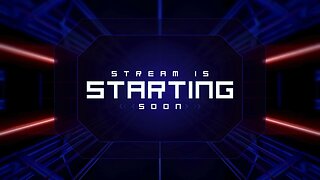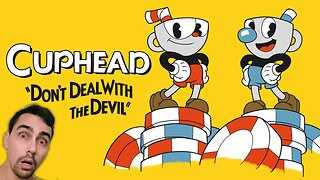Premium Only Content

How to play Pocket Billiards (Pool) - General Rules
Learn the general rules to Pocket Billiards (also called Pool) quickly and concisely - This video has no distractions, just the rules.
Learn how to play 8 Ball here: https://youtu.be/T87g7ronTRs
Learn how to play 9 Ball here: https://youtu.be/ohS-Q5atMLU
Learn the rules to Straigh Pool (14.1 Continuous) here: https://youtu.be/fKc0mb97VD8
Don't own a pool table?
Buy it here: https://amzn.to/3hdr6kE (This Amazon Affiliate link directly supports me)
RULES:
These are the general rules for all billiard games and should be followed unless the specific game says otherwise. There are 6 pockets on the table: 4 corner pockets and 2 side pockets. Diamonds go around the long and short rails. Two diamonds in, on either side of the long rail, is an imaginary line called the head string and foot string. In the middle of those lines is the head spot and the foot spot. In the exact middle of the table is the center spot. The short rail near the head spot is called the head rail and the place between the head spot and the head rail is called the kitchen. The walls are called cushions and the edges near pockets are called pocket points. The white ball is called the cue ball. The other balls are called the object balls, of which they are colored solid and striped. The stick players use to interact with balls is called a cue.
Use a triangle to rack the balls and the apex ball should be on the foot spot. All the balls must be lined up behind the apex ball and pressed together so that they all have contact with each other. If a player fails to hit a ball into a pocket on a legal shot, which is called “to pocket”, then the player's turn is over and their opponent goes, hitting the cue ball wherever it lays on the table.
To strike the ball, rest your hand on the table with the cue sliding over the crook of your thumb. You are allowed to wrap your index finger over the cue if you want. Hitting a ball is called a stroke. The hit must be momentary, you may not push the ball, or it is a foul. You may not touch the cue ball with anything other than the tip of the cue or it is a foul.
To determine who will go first, each player simultaneously shoots a solid ball from behind the head string so that it bounces off the foot rail and returns to as close as possible to the head rail. This process is called the lag. The player whose ball is the closest to the innermost edge of the head cushion wins the lag and determines who breaks.
To break, place the que ball in the kitchen then strike it directly into the racked balls, it may not touch anything before striking the balls or it is a foul. If you scratch on the break you do not lose the game.
When the cue ball is pocketed, or touches an object ball that was already pocketed, it is a foul called a scratch, and results with the loss of turn and the opponent getting a “ball in hand”. Ball in hand means you place the cue ball anywhere in the kitchen. The shooting player may then shoot at any object ball that isn’t in the kitchen, unless they first bounce the cue ball off the foot rail. The ball in hand may be adjusted or moved prior to the hit.
A ball is pocketed if it goes into the pocket and remains there. A ball that rebounds from a pocket back onto the table bed is not a pocketed ball. “Call Shot” is the process of announcing the first object ball and its desired pocket you are shooting for. Although, if the shot is an obvious shot, you do not need to indicate it. The exact path and every collision the ball uses doesn’t no need to be indicted, nor do any additional object balls that end up pocketed. Only one ball may be called on each shot and you aren’t penalized if more than 1 ball are legally pocketed in so long as the called ball is pocketed. The opening break is not a call shot and the shooter may choose to call "safety", where the play passes to the opponent at the end of the shot regardless if balls are pocketed.
You must always keep at least one foot in contact with the floor during a shot. You may not shoot while any ball is still in motion. This includes rotational motion. If any ball moves on its own after all the balls have stopped moving for longer that 5 seconds, then you return the ball as close as you can to its previous position. If an object ball drops into a pocket "by itself" as a player shoots at it, so that the cue ball is unable to hit it when it otherwise would have...
If you foul, your inning ends, the stroke is invalid, and any pocketed balls are not counted to the shooter's credit. The balls are replaced only if the rules of the specific game require it. If the cue ball fails to make contact with any legal object ball it is a foul. A player must cause the cue ball to contact a legal object ball and then pocket a numbered ball or cause the cue ball or any numbered ball to contact a cushion. Failure to meet these requirements is a foul. Touching any object ball with the cue ball while it is in hand is a foul.
-
 2:21
2:21
Triple S Games
1 year ago $0.06 earnedHow to play Cruise Pawns
943 -
 2:35:13
2:35:13
Tundra Tactical
7 hours ago $3.09 earned🔫 California Ammo Win, Sig Sauer P320 Controversy, Meme Review & Would You Rather! 🎉🔥
27.9K4 -
 16:24
16:24
Forrest Galante
4 hours ago6 Deadliest Man Eaters to Ever Exist
19.6K3 -
 10:14
10:14
MattMorseTV
9 hours ago $10.78 earnedThe EU is in HOT WATER.
83.8K47 -
 LIVE
LIVE
The Rabble Wrangler
1 day agoPUBG with The Best in the West!
470 watching -
 3:57:19
3:57:19
EvilT4000
7 hours ago $1.58 earnedSaturday.....🟢For energy and focus click my Dubby link!
24.8K3 -
 3:02:55
3:02:55
SlingerGames
4 hours agoSpartan Night - Halo and More | Creator for @SELFMADEGGS
16.4K -
 3:57:49
3:57:49
Mally_Mouse
9 hours agoSpicy Saturday!! - 10k CELEBRATION! - Let's Play: Labyrinthine
32K1 -
 37:09
37:09
The Mel K Show
10 hours agoMel K & Dr. Kirk Moore | A Doctor’s Oath: Doing What is Right No Matter the Cost | 7-26-25
32.4K15 -
 LIVE
LIVE
Cewpins
5 hours agoCuphead while BLAZED🔥420💨710🍃!MJ
50 watching